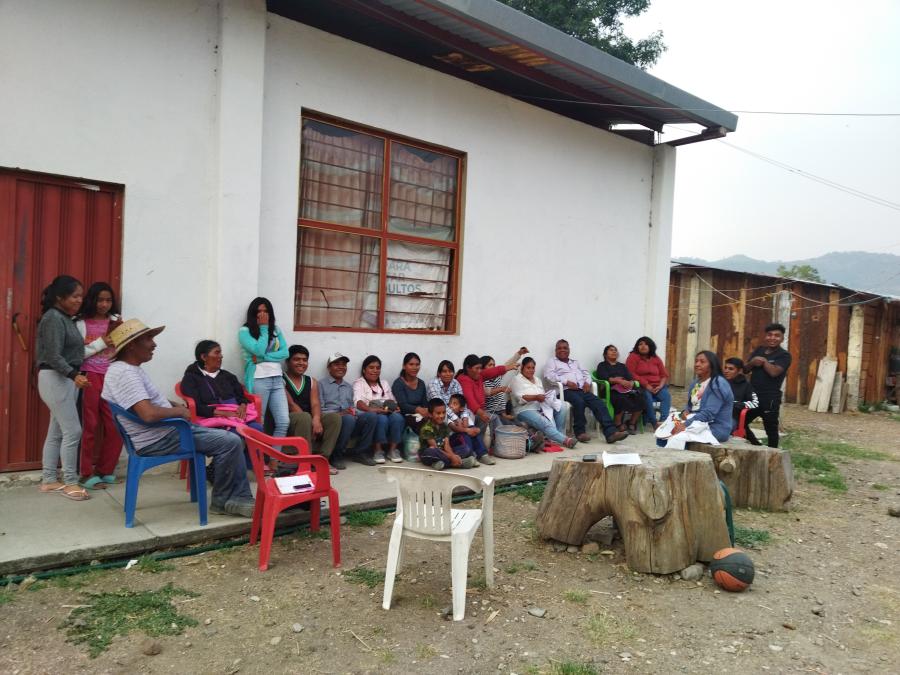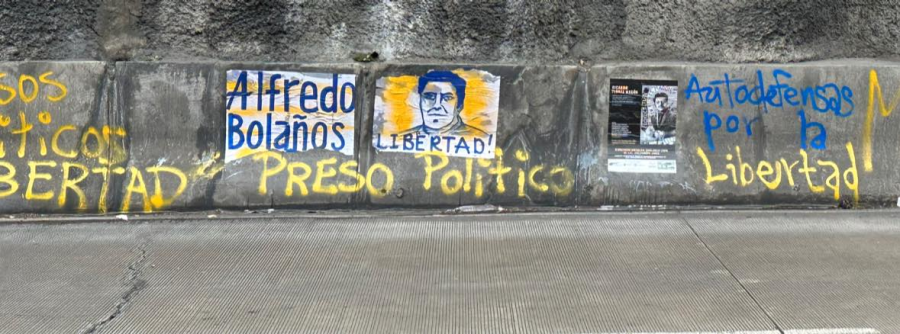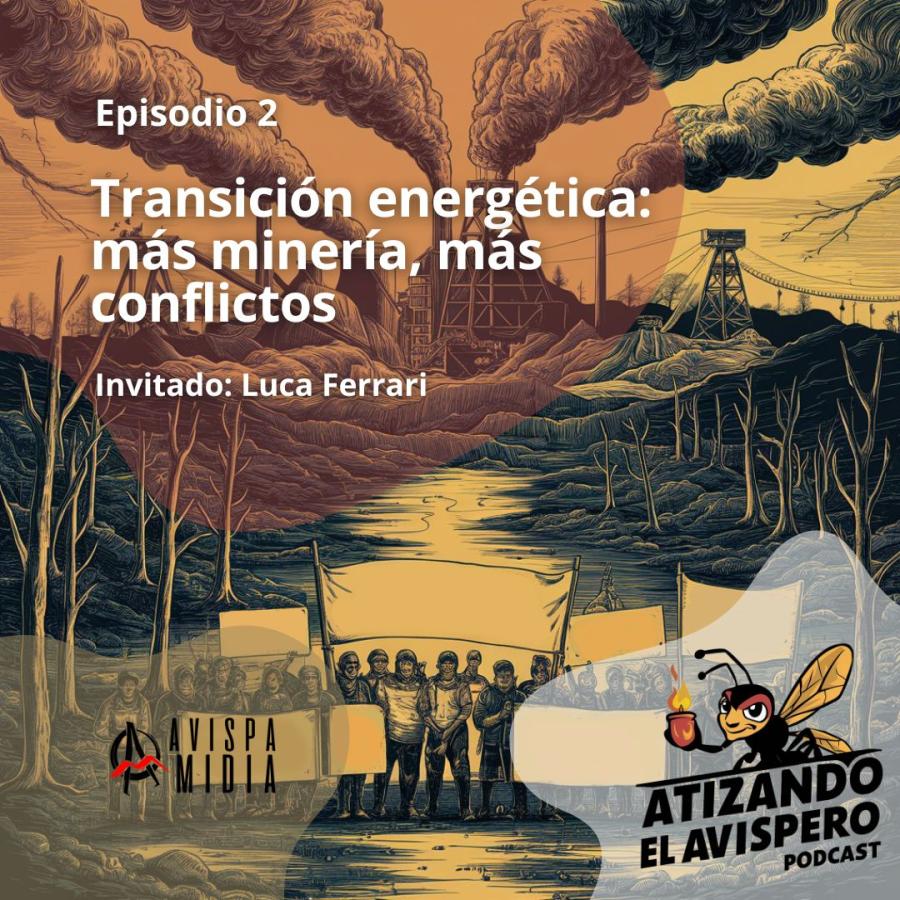Challenging yet favorable conditions have prevented the ethnolinguistic group of the Balsas Nahuas in Mexico from fading away, despite the strong pressures during colonial and modern times to assimilate. Isolation, intense commerce, and ritual networking among their communities have produced a propitious context for Nahua cultural and linguistic survival, which is threatened by strong migration and the presence of Spanish-only schools in the region. More specifically, the wealth of crafts produced in the region—especially the painted bark wood paper known as amate that has been recovered for the production of educational materials—make it a unique setting for an educational intervention. Meanwhile, successful community opposition to a long-planned mega dam has created unity.
Balsas Nahuas is composed of a series of Nahuatl-speaking communities with a population of over 40,000 people, settled along the upper banks of the Balsas River in Guerrero, Mexico. According to official 2000 figures from the Consejo Nacional de Población (National Population Council), Guerrero is the second poorest state in Mexico, only after Chiapas. The Balsas River is located southwest of Mexico City near Acapulco, a three-and-one-half-hour drive to Oapan via the super highway Autopista del Sol, “the sun freeway.” The highway was introduced about a decade ago in connection with the San Juan Tetelcingo project, an official hydroelectric dam that would have flooded the entire Balsas region. The Nahuas successfully opposed the dam in a grassroots mobilization that gave rise to the Consejo de Pueblos Nahuas del Alto Balsas (Council of the Upper Balsas Villages, CPNAB), a local organization that is still active.
Travelers enter the heart of the Balsas region by passing through the community of Tula del Río from the stunning sightseeing location of Puente Mezcala (Mezcala Bridge). The bridge itself has been appropriated by the Nahuas, mostly from Oapan (one of the Balsas Nahuas linguistic and cultural bastions), who have established a crafts market for tourists who stop to eat or stretch on their way to Acapulco.
Balsas Nahuas Background
The Balsas Nahuas region is not homogenous geographically or economically. Economic means of subsistence and stratification in each community impose a complex range of language conditions, oscillating from communities with different degrees of bilingualism and even important monolingual Nahuatl sectors (for example Oapan and neighboring Analco), to communities in which the Native language and culture is becoming a memory and where in most common practices Spanish is the primary language.
Even when the Nahuatl language is basically intelligible among the different Balsas Nahua communities, there are still important dialectal modalities that, on occasion, could produce communication difficulties. Such potential communication barriers have been mitigated by a number of circumstances. For example, relatively intense contact among the communities of the area, linked to commercial transactions, is mostly conducted in Nahuatl. Commerce in the Balsas Nahuas region has become a major activity linked to the production of a series of crafts for the tourist market—including the amate, one of the most famous Mexican crafts worldwide.
Local festivities and ritual ties have also helped Nahuatl-speaking communities maintain close contact between their villages, preventing the fatal destruction of the awareness of linguistic and cultural unity. Yet the networks that operate in commerce or the family ritual ties among the different communities also include powerful forces that favor the penetration of Spanish and even English, jeopardizing Balsas Nahuas language and culture. Cultural survival has been historically deeply rooted in this region, including a recent history of recreation and innovation that is manifested in a series of characteristic Balsas Nahuas crafts. In any case, encroachment into Balsas Nahuas and indigenous resistance occurred even in prehispanic times when, even while paying tribute, the Nahua were probably never totally subjugated by Mexican invaders. In colonial times, even if bilingualism greatly expanded, monolingual Nahuatl speakers survived. The recent history of cultural survival in the region provides a favorable, albeit complex, context for militant activism favoring the revitalization, maintenance, and development of local Nahuatl language and Nahua culture.
Crafts in the Balsas Nahuas
Two modern forces explain the relatively strong position in terms of linguistic and cultural survival that the Balsas Nahuas hold today. One is the emergence of a series of crafts, especially the pintura en amate (paintings in amate). Generally speaking, the amate and its commercialization has become an outstanding economic means of survival, reaching the point at which the amate boom has produced a considerable amount of economic wealth in communities such as Ameyaltepec, where the initial amate impulse started. This craft has even displaced agricultural activities, which in Ameyaltepec and other communities such as Xalitla have practically disappeared.
In Mexico the amate is made by hñohño, better known as otomi, of the Sierra Norte de Puebla, from whom Balsas Nahuas purchase it. The hñohño manufacture the amate and related crafts, and Balsas Nahuas paint the amate to create this extremely popular Mexican craft. Balsas Nahuas travel long distances to sell this and other crafts in tourist resorts. The popularity of amate rose in the mid- and late-1980s. After a period of experimentation with different materials in the 1970s, the tlacuilos (painters) have adapted and recreated their ancestral pictographic heritage in the recent pictographic amate tradition.
The amates de pájaros (amates with birds) are distinguished from the amates de historia (amates that tell stories) because they are less elaborate and thus cheaper, while the latter constitute pictographic ethnographies of the Balsas Nahuas ritual, ceremonial, and everyday life. Amates de historia are culturally specific ways of writing and are probably the direct antecedent of what we witness today in terms of the emergence of a number of talented amate artists.
Different types of amates, or the amate catalog, have been developed to serve a variety of markets. These amates range from the most inexpensive, including the amate de pájaros, which are produced for mass consumption, some manufactured by means of a stamp of the famous Piedra del Sol (the Aztec sun calendar); to different qualities of amates de pájaros and amates de historias; to the unique pieces by celebrated tlacuilos who earn thousands of dollars producing exclusive amates for collectors in different parts of the world. The amate is just one example of merchandise that has helped in the transition to relative economic well-being in some of these communities, including Ameyaltepec, Xalitla, and Oapan, all of which are amateros (amate producers). Other crafts that have favored transactions in Nahuatl are the carved wood masks of San Francisco Ozomatlan, the pescados (fish) of Ahuehuepan or the angelitos (angels), and to a lesser extent the pottery of San Augustín Oapan. Not all crafts have been successfully integrated as merchandise in the tourist market. There is no direct, mechanical correlation between cultural survival, the use of the mother tongue, and the flourishing or demise of local crafts that produce a specific amount of economic wealth. In Tuliman, where the language is on the brink of extinction, it is difficult to find someone who still produces the traditional earth vessels devised to store water. But in Maxela and Xalitla, even while the amate has flourished, the use of Nahatl has decreased. In Tuliman, Xalitla, and Maxela, most children acquire Spanish as a first language and the communities have almost lost their mother tongue.
Movement Against
the Tetelcingo Dam
Opposition to the long-planned hydroelectric dam in the Balsas Nahuas region, specifically in San Juan Tetelcingo (the community from which the name of the project is taken), has also reinforced Balsas Nahuas awareness of cultural and political unity. Balsas Nahuas residents are aware of their history of coping with external disrupting and ultimately annihilating forces such as the pressures of the capitalist market or federally forced modernization projects. In this sense, the people of Balsas Nahuas have set a precedent in Mexico by detaining the construction of a mega dam in their territory. This success is consonant with an outstanding awareness of linguistic and cultural unity—demonstrated by the mobilization against the dam—despite not only dialectal Nahuatl differences and internal conflict, but also the Mexican state’s long-term co-optation attempts. The movement reinforced Balsas Nahuas integrity in terms of tightening the communication and solidarity networks of the region, Jane Hindly states in an article about the dam conflict. This solidarity contributed to preventing dialectal fragmentation and even revitalized local language and culture. In this context, Nahuatl language and Nahua culture were emblematically vindicated as political symbols in the defense against the threat of destruction of Balsas Nahuas ancestral legacy.
The dam project was aborted about a decade ago, while president Salinas de Gortari was in power, when the people of Balsas Nahuas successfully struggled against the dam via the CPNAB, a grassroots movement that organized a series of actions against the project, which would have displaced all Balsas Nahuas communities. These actions included intense demonstrations along the Acapulco Mexico highway, community assemblies in different communities of the region, and national and international journalistic coverage and solidarity from different sectors of civil society. Nevertheless, recently the threat of destruction of the Balsas Nahuas region has re-emerged in President Vincente Fox’s official program for the development of the nation called the Puebla-Panama Plan (Plan Puebla Panamá), and construction of the dam is again apparently being contemplated.
If this project is reactivated by the Mexican state, the communities would probably once again struggle against it. Ironically, the threat of destruction has had more positive effects on the re-evaluation of the ethno-linguistic Balsas Nahuas legacy—much more than any official school program, no matter how bilingual or intercultural it claims to be. These results suggest relatively favorable conditions for the development of a more bottom-up educational effort, an endeavor we undertook at the turn of the millennium.
Intervention Efforts and
Some Preliminary Results
Cleofas Ramírez Celestino, a local Nahua tlacuila, and her daughters, Paula and Felix Alejandro Ramírez, worked with José Antonio Flores Farfán nearly a decade ago to initiate an intervention effort in order to prevent the Nahuatl language and culture from fading away. Even as Balsas Nahuas residents constitute an interesting example of cultural survival, the demise of the Nahuatl language has already taken place in a number of villages of the region.
The strategies that our small group developed as pilot interventions to promote and empower local culture in the mother tongue have included the production and dissemination of a series of printed materials. We have distributed materials aimed at recreating threatened Nahuatl genres, such as those locally known as cuentitos (tales) and saasaanilli (riddles), over five years, mostly through community workshops. We have also recovered the artistic pictographic amate tradition by recreating the locally produced amates in different formats—such as illustrated books and three-dimensional cartoon videos for children.
Participation in the workshops is favored by an open invitation to the community on special or selected occasions such as the patron saints’ days festivities. Via the local aparato, the announcement system of the community, we summon children to the video exhibition. Once we have warmed the atmosphere by showing the tales and riddles videos, we inititate more active participation by asking the children about their knowledge of these and similar stories or riddles. This discussion allows the use of the language in an informal joyful manner, while reinforcing participation with books or audio tapes of stories like the Tlakwaatsiin (opossum), a Mesoamerican trickster known as “the greedy guts, big eater,” who hosts the riddles videos and a Web site produced for a general public.1 In the Balsas Nahuas region, we have distributed about 2,000 tapes and 1,000 books, including See tosaasaanil (Nahua Riddles) and Aalamatsiin (The Mermaid), in addition to audio books about riddles, and several videos for use in households that have video cassette players. At a national level, almost a quarter of a million copies of these and similar books, including those in other indigenous languages such as Maya Yucatec (Briceño Chel), are in school libraries. We, along with filmmakers, animators, and musicians, have produced materials from an intercultural approach—for locals as well as the general public. For this purpose, we include as many languages as possible, such as different indigenous tongues, with translations not only to colonial languages but to other regional varieties of the indigenous language, as in the case of the Nahuatl riddles coloring book.
All of these materials look to bring together speakers of Nahuatl, Spanish, English, and other indigenous languages, especially through the dissemination and production of materials that from a Nahua perspective are not culturally conceived as exclusively for children. Production of the materials in different formats, such as in Nahuatl-Spanish versions and as audio books, is consonant with Native ways of socialization that include the oral transmission of culture and the visual means of reproducing local language and culture.
Given the urgency to find strategies to reverse language shift, in communities with high degrees of language loss, such as Xalitla, we have developed a revitalization effort to reintroduce genres such as riddles, and have even resorted to ancestral referents in so-called classical Nahuatl—a written form that few even know exists—to raise awareness of the wealth of Nahuatl literature. These efforts are not only meant to revitalize communities like Xalitla, but to reinforce the use of Nahuatl in communities with high language loyalty such as Oapan. We have reintroduced some old Nahuatl texts and hope to introduce more, to facilitate and stimulate discussion between different types of speakers, including active and passive speakers, elders, children, and speakers of different dialectal varieties. While the co-participatory methodology used to develop the corpus of language materials serves to combine different peoples’ abilities, it also permits a series of intercultural processes that provide status to the endangered language and may even facilitate reversal of language loss, as it did in the case of Ramírez Celestino’s daughters, who participated in the audio of a number of these products.
Nahuas survival is not an individual voluntary act, but rather requires community involvement. This involvement has been favored via the dissemination of the corpus in informal settings such as households, a key ambit at the community level. The joyful, context-sensitive approach that sustains our ongoing intervention does not rely on models to support Native culture and language, typical of reductionist views on indigenous education, such as the writing/schooling reduction. Nevertheless, this problem also invites a reflection on the nature and impact of schools and the role of writing in intervention efforts on the Nahua speech community and beyond, something we will have to start facing in future facets of the project.
1. See http://www.kokone.com.mx.
José Antonio Flores Farfán holds a doctorate degree in linguistics from the University of Amsterdam. He is full professor at CIESAS in Mexico City. His dissertation, published by CIESAS in 1999, deals with the Nahuatl-Spanish conflictive contact situation in Alto Balsas communities in Guerrero, Mexico. As a teacher in Native American Indian education, he has taught at the University of Arizona in the Department of Language, Reading, and Culture; the College of Education; and the American Indian Language Development Institute. The author has done extensive research on sociolinguistics; pragmatics; and language politics, revitalization, and reversal leading to educational initiatives, including both Balsas Nahuas and a wider audience. Cleofas Ramírez Celestino was born in Xalitla, Guerrero. She is a talented tlacuila (painter) and illustrates in amates the books for children that she produces with Farfán at the Centro de Investigaciones y Estudios Superiors en Antropología Social (Center for Research and Higher Studies in Social Anthropology, CIESAS).
References and further reading
Amith, J. (1995). La Tradición del Amate. Innovación y Protesta en el Arte Mexicano. México: La Casa de las Imágenes.
Blanco, G. & Flores Farfán, J.A. (1999-2003). Kokone. http://www.kokone.com.mx.
Briceño Chel, F., Jiménez Santos, M.B. & Flores Farfán, J.A., et al. (2003). Na’at le Ba’ala Paalen. Adivinanzas Mayas Yucatecas. México: Artes de México-CIESAS. Also available in video.
Consejo Nacional de Población. (2000). Indices de Marginación. México: CONAPO.
Flores Farfán, J.A. (1998). On the Spanish of the Nahuas. Hispanic Linguistics 10:1, pp 1-41. Flores Farfán, J.A. (1999). Cuatreros Somos y Toindioma Hablamos. México: CIESAS.
Flores Farfán, J.A. (2001). Culture and language revitalization, maintenance, and development in Mexico, International Journal of the Sociology of Language 152, pp 185-197.
Flores Farfán, J.A. (2003a). Nahuatl purism: Between language innovation, maintenance and shift. In Purism in the Age of Globalization. Brincat, J., et al., Eds., Bochum: Universitätsverlag Dr. N. Brockmeyer. Pp 281–313.
Hindley, J. (1999). Indigenous mobilization, development, and democratization in Guerrero: the Nahua people vs. the Tetelcingo dam. In Subnational politics and democratization in Mexico. La Jolla, California: Center for U.S. Mexican Studies. Pp 207-238.
INEGI (2001). Tabulados Básicos. Estados Unidos Mexicanos. XII Censo General de Población y Vivienda, 2000. México: INEGI.
INI (2002). Indicadores Socioeconómicos de los Pueblos Indígenas de México. México: INI.



